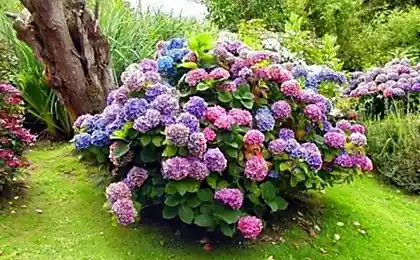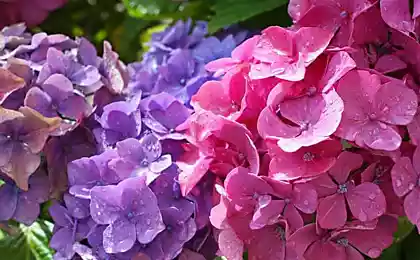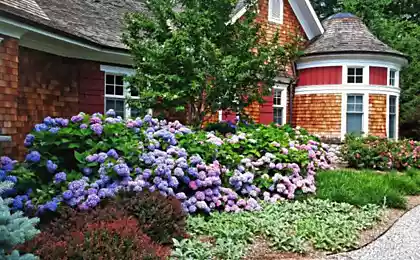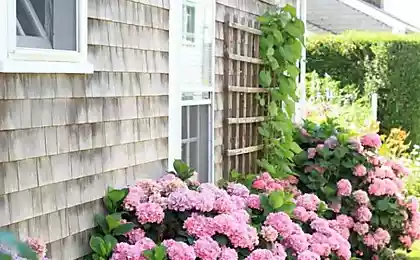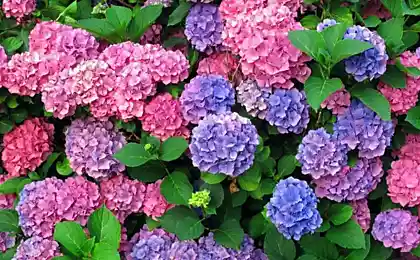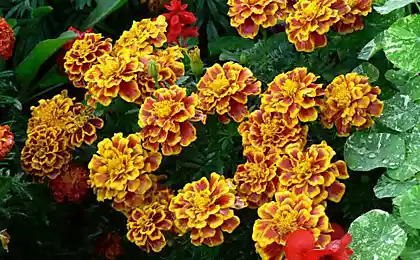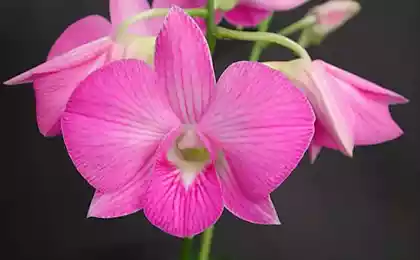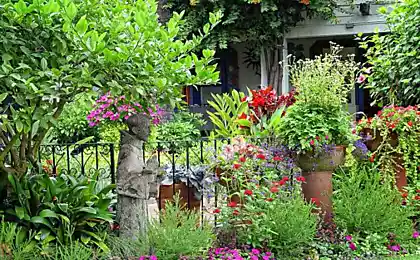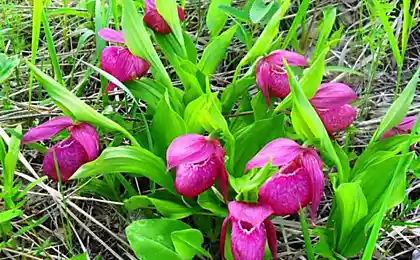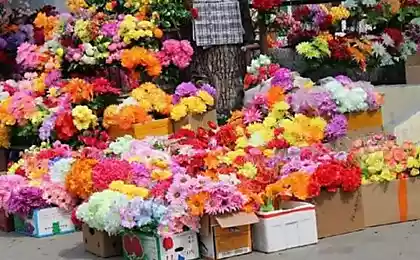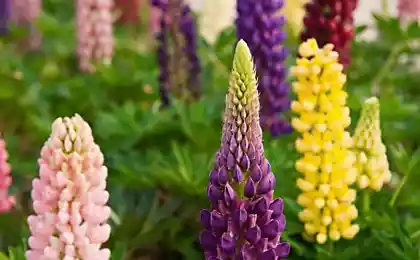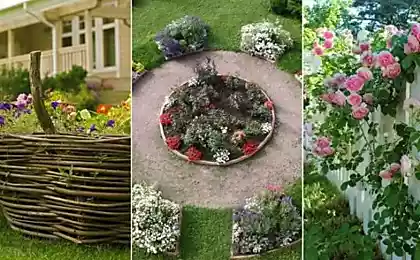544
The secrets of growing hydrangea paniculata
Hydrangea paniculata (Hydrangea paniculata) is low (about five feet) shrub native to the Far East. Wild hydrangea paniculata can be found in Japan and China, as well as the Kuril Islands and Sakhalin.
Its garden forms, resistant to adverse environmental conditions, is readily used by gardeners and designers for decorating plots.
The appearance of hydrangea paniculata
Hydrangea paniculata forms a large (length 30 cm) inflorescences consisting of two types of flowers. Bisexual small flowers, and after pollination they lose their petals. The size of the sterile flowers can reach a diameter of 3 inches, and they remain on the bushes for a very long time, gradually changing the color of creamy or greenish-white to pale pink and greenish-red.
Hydrangea grows quite quickly. Direct spreading branches are planted large opposite leaves, and inflorescences are formed on shoots of the current year.
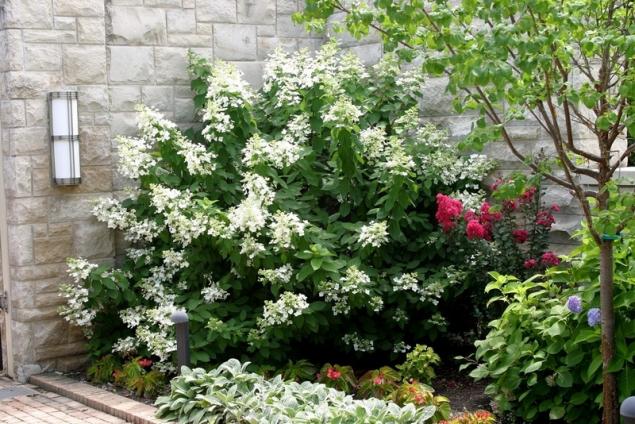
Hydrangea paniculata: planting and care
Hydrangea paniculata – water-loving plant; it tolerate even boggy soils.
To get strong, floriferous shrub, it is necessary to maintain moist soil beneath him in a radius of five feet. In dry weather the plant needs regular watering.
Hydrangea grows best on clayey acidic soils; the soil with alkaline reaction, it is possible to disease the chlorosis of the leaves. If the level is low acidity used for the acidification of iron sulfate and ammonium sulphate, coniferous litter or peat.
It is preferable to plant hydrangeas from hedges or various structures, giving protection from the wind. Choose areas with good lighting and fertile soil.
Hydrangea paniculata can grow in conditions of high contamination, so it can be planted along the road, to grow in urban environments.
Note that in the regions with harsh climate in winter is desirable hydrangea light cover. However, damaged by frost shoots in the summer, usually easy to recover, and the whole plant has good winter hardiness.
In the early spring or even during the winter hydrangea is recommended to trim; if pruning is carried out too late, when the dormant period of the plant has ended, it could weaken him, lead to disease and lack of flowers. Adjusting the degree of trimming, you can achieve abundant flowering (this requires very short crop of last year's shoots), or to enhance the growth of stems (in this case, choose a gentle pruning).
The shrub requires regular fertilizing. Liquid mineral fertilizers are applied every two weeks; organic fertilizer – once a month, a week after the mineral supplements. In August, fertilization is stopped. To strengthen the shoots, once a month watering hydrangeas with a solution of potassium permanganate (in a bucket of water requires 0.5 g).
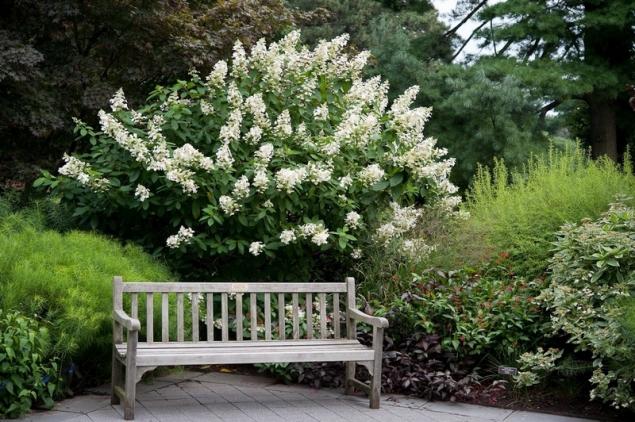
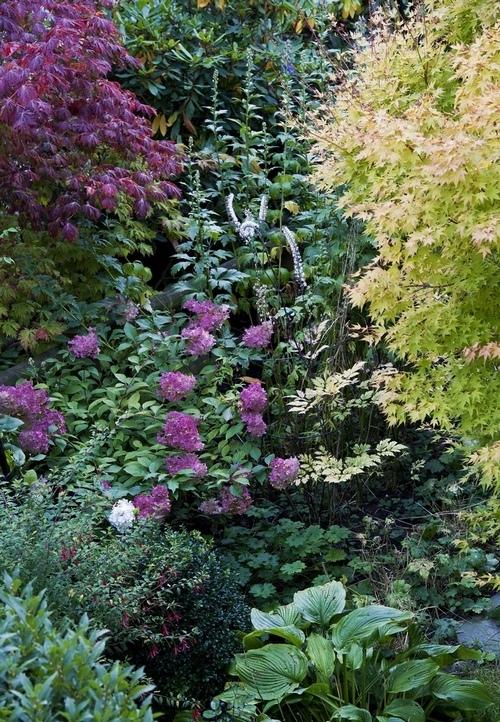
Hydrangea paniculata: how to breeding
Paniculata hydrangeas are propagated by layering and from cuttings; in order to succeed, it is desirable to use growth stimulants (e.g., IAA), as this plant is quite difficult to reproduce.
Reproduction of hydrangea layering
To obtain strains, and bent pin to the ground the branch of a Bush. It is recommended to make a small depression in the ground, and the top escape abundantly to fill the earth. The top branches are fixed in an upright position using strings to the support.
This procedure done in the spring or late summer. To separate the sapling from the parent plant will be a year later, when it forms its own roots.
Cuttings of hydrangea
Of shoots removed during pruning, are harvested lignified cuttings for propagation of hydrangea. Selected branches soak in the water for two or three days, and then cut cuttings. Each cutting should be three to five internodes.
Treating the lower sections of the cuttings with growth promoters, they are planted, buried in the ground about 2/3.
The soil for planting is prepared from a mixture of sand and peat in equal parts; a container of planted cuttings cover film.
Green cuttings are cut in late June, with well-developed shoots and roots in the pots, covering them with a film or glass jars.
For planting of green cuttings of river sand mixed with peat in the ratio 1: 2; in the pot the peat mixture poured a thick layer of sand so that the recessed handle not made of peat soil. In pots with cuttings always maintain moist soil; keep them in the basement until spring.
Sometimes I leave the cuttings in pots before will ripen the young shoots; this typically occurs by August of next year, and then move the seedlings in the open ground.
Young plants are encouraged to hide from the frost; only in the third year, after the first flowering, hydrangea becomes sufficiently hardy to do a light shelter for the winter.
Despite some difficulties of cultivation, associated with a severe climate of Central Russia, hydrangea paniculata are popular and in great demand by gardeners.
P. S. And remember, only by changing their consumption — together we change the world! ©
Join us in Facebook , Vkontakte, Odnoklassniki
Source: www.sazhaemsad.ru/gortenziya-metelchataya.html
Its garden forms, resistant to adverse environmental conditions, is readily used by gardeners and designers for decorating plots.
The appearance of hydrangea paniculata
Hydrangea paniculata forms a large (length 30 cm) inflorescences consisting of two types of flowers. Bisexual small flowers, and after pollination they lose their petals. The size of the sterile flowers can reach a diameter of 3 inches, and they remain on the bushes for a very long time, gradually changing the color of creamy or greenish-white to pale pink and greenish-red.
Hydrangea grows quite quickly. Direct spreading branches are planted large opposite leaves, and inflorescences are formed on shoots of the current year.

Hydrangea paniculata: planting and care
Hydrangea paniculata – water-loving plant; it tolerate even boggy soils.
To get strong, floriferous shrub, it is necessary to maintain moist soil beneath him in a radius of five feet. In dry weather the plant needs regular watering.
Hydrangea grows best on clayey acidic soils; the soil with alkaline reaction, it is possible to disease the chlorosis of the leaves. If the level is low acidity used for the acidification of iron sulfate and ammonium sulphate, coniferous litter or peat.
It is preferable to plant hydrangeas from hedges or various structures, giving protection from the wind. Choose areas with good lighting and fertile soil.
Hydrangea paniculata can grow in conditions of high contamination, so it can be planted along the road, to grow in urban environments.
Note that in the regions with harsh climate in winter is desirable hydrangea light cover. However, damaged by frost shoots in the summer, usually easy to recover, and the whole plant has good winter hardiness.
In the early spring or even during the winter hydrangea is recommended to trim; if pruning is carried out too late, when the dormant period of the plant has ended, it could weaken him, lead to disease and lack of flowers. Adjusting the degree of trimming, you can achieve abundant flowering (this requires very short crop of last year's shoots), or to enhance the growth of stems (in this case, choose a gentle pruning).
The shrub requires regular fertilizing. Liquid mineral fertilizers are applied every two weeks; organic fertilizer – once a month, a week after the mineral supplements. In August, fertilization is stopped. To strengthen the shoots, once a month watering hydrangeas with a solution of potassium permanganate (in a bucket of water requires 0.5 g).


Hydrangea paniculata: how to breeding
Paniculata hydrangeas are propagated by layering and from cuttings; in order to succeed, it is desirable to use growth stimulants (e.g., IAA), as this plant is quite difficult to reproduce.
Reproduction of hydrangea layering
To obtain strains, and bent pin to the ground the branch of a Bush. It is recommended to make a small depression in the ground, and the top escape abundantly to fill the earth. The top branches are fixed in an upright position using strings to the support.
This procedure done in the spring or late summer. To separate the sapling from the parent plant will be a year later, when it forms its own roots.
Cuttings of hydrangea
Of shoots removed during pruning, are harvested lignified cuttings for propagation of hydrangea. Selected branches soak in the water for two or three days, and then cut cuttings. Each cutting should be three to five internodes.
Treating the lower sections of the cuttings with growth promoters, they are planted, buried in the ground about 2/3.
The soil for planting is prepared from a mixture of sand and peat in equal parts; a container of planted cuttings cover film.
Green cuttings are cut in late June, with well-developed shoots and roots in the pots, covering them with a film or glass jars.
For planting of green cuttings of river sand mixed with peat in the ratio 1: 2; in the pot the peat mixture poured a thick layer of sand so that the recessed handle not made of peat soil. In pots with cuttings always maintain moist soil; keep them in the basement until spring.
Sometimes I leave the cuttings in pots before will ripen the young shoots; this typically occurs by August of next year, and then move the seedlings in the open ground.
Young plants are encouraged to hide from the frost; only in the third year, after the first flowering, hydrangea becomes sufficiently hardy to do a light shelter for the winter.
Despite some difficulties of cultivation, associated with a severe climate of Central Russia, hydrangea paniculata are popular and in great demand by gardeners.
P. S. And remember, only by changing their consumption — together we change the world! ©
Join us in Facebook , Vkontakte, Odnoklassniki
Source: www.sazhaemsad.ru/gortenziya-metelchataya.html
